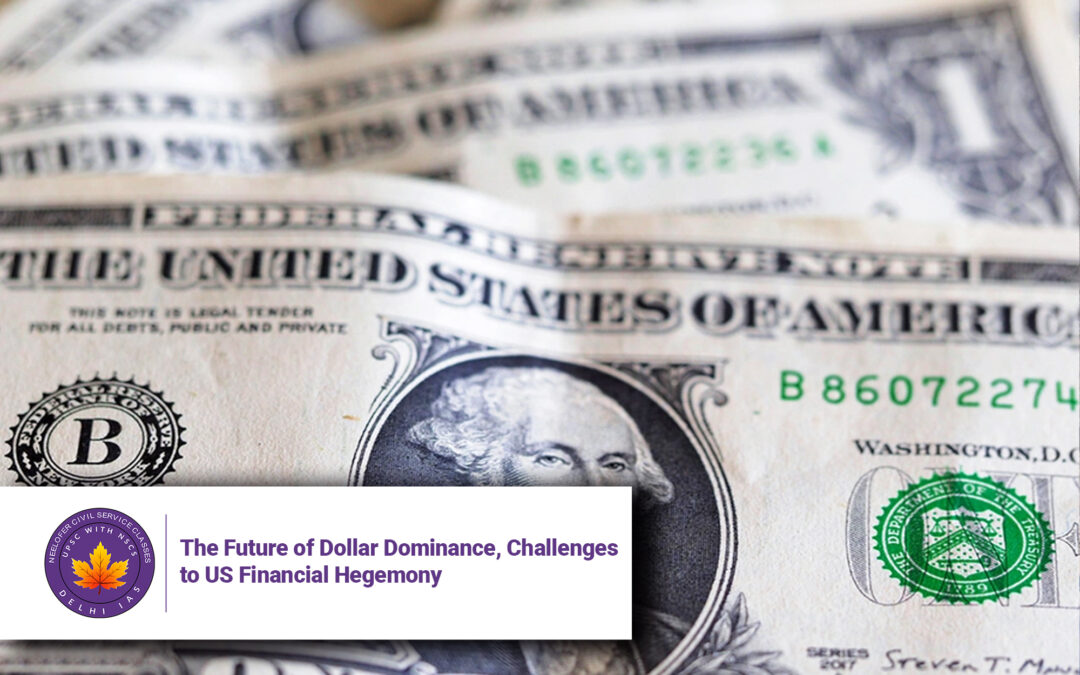The Future of Dollar Dominance, Challenges to US Financial Hegemony
Introduction
The US dollar’s position as the world’s reserve currency—unchallenged since the 1944 Bretton Woods agreement—now faces unprecedented threats. With the US share of global GDP shrinking to 25% and trade to just 17%, while still accounting for 57% of foreign exchange reserves and 88% of forex transactions, the dollar presents a paradox of declining economic might but enduring financial dominance. This article examines:
-
The shifting pillars of dollar supremacy
-
Impact of Trump’s trade wars on currency stability
-
Rise of gold and alternative currencies
-
Potential scenarios for the dollar’s future
-
5 Key Q&A on global currency dynamics
The Paradox of Dollar Dominance
Key Metrics (2024)
| Indicator | US Share | Trend |
|---|---|---|
| Global GDP | 25% | ▼ From 33% in 1945 |
| Global Trade | 17% | ▼ From 50% in 1945 |
| Forex Reserves | 57% | ▼ From 72% in 2000 |
| Forex Transactions | 88% | ▲ From 85% in 2010 |
| Foreign Debt Issuance | 65% | Stable |
Source: IMF, BIS, Federal Reserve
The Trump Effect: Accelerating De-Dollarization
Policy Impacts
-
Trade Wars
-
25% tariffs on $550B Chinese goods
-
Retaliatory moves by EU, India, Turkey
-
-
Sanctions Overreach
-
3,800 entities on OFAC list (40% increase since 2020)
-
Russia/China developing alternative SWIFT systems
-
-
Debt Instrument Erosion
-
Foreign holdings of US Treasuries ▼ to 34% (from 48% peak)
-
The Gold Rush: Central Banks Diversify
Gold Reserves Growth (2010-2024)
| Country | Increase | Strategy |
|---|---|---|
| Russia | 2,300 tons | Complete de-dollarization |
| China | 1,900 tons | Stealth accumulation |
| India | 800 tons | IMF gold purchases |
| Turkey | 600 tons | Local gold-backed Lira |
Market Impact: Gold prices ▲ 450% since 2000 (outperforming S&P 500)
Currency Challengers: A Fragmented Future?
Contender Analysis
| Currency | Advantage | Obstacle |
|---|---|---|
| Euro | 20% forex reserves | EU fragmentation |
| Yuan | 33% RMB trade settlement | Capital controls |
| Bitcoin | Decentralized | Regulatory uncertainty |
| BRICS Basket | Proposed alternative | Lack of unified monetary policy |
5 Key Q&A on Dollar’s Future
Q1: Why hasn’t the dollar collapsed despite US economic decline?
A: Network effects—its entrenched role in:
-
Oil trading (80% of contracts)
-
Global debt markets ($13T foreign dollar debt)
-
Financial messaging (SWIFT dominance)
Q2: Can China’s yuan replace the dollar?
A: Not yet. While RMB is:
-
3% of reserves (vs dollar’s 57%)
-
33% of China’s trade settlement
Constraints: Capital controls, lack of bond market depth
Q3: What’s the gold standard 2.0 possibility?
A: Emerging markets are experimenting:
-
Russia’s gold-backed ruble
-
BRICS discussing commodity-backed currency
But lacks scale for global adoption
Q4: How do US interest rates affect dollar dominance?
A: High rates (currently 5.25-5.5%):
-
▲ Short-term dollar demand
-
▼ Long-term debt sustainability fears
Q5: What would dollar collapse look like?
A: Likely scenarios:
-
Gradual erosion (10-15 year transition)
-
Bifurcated system (West=dollar, East=yuan/gold)
-
Crisis-driven crash (if US defaults on debt)
Future Scenarios: 2030 Outlook
Projected Currency Shares
| Scenario | Dollar | Euro | Yuan | Others |
|---|---|---|---|---|
| Status Quo | 50% | 22% | 8% | 20% |
| Multipolar | 35% | 20% | 18% | 27% |
| Yuan Hegemony | 25% | 15% | 35% | 25% |
| Digital Currency | 30% | 10% | 15% | 45%* |
*CBDCs, Bitcoin, gold-backed tokens
Conclusion: Managing the Decline
The dollar’s fate hinges on:
✅ US fiscal discipline (currently $34T debt)
✅ Geopolitical restraint (avoiding sanction overuse)
✅ Financial innovation (digital dollar development)
As economist Kindleberger noted, currencies reflect power—but today’s multipolar world may no longer tolerate monetary unilateralism. The coming decade will test whether the dollar can adapt or face obsolescence.
Authors
G. Chandrashekhar
Jayati Ghosh
Economists and Columnists







